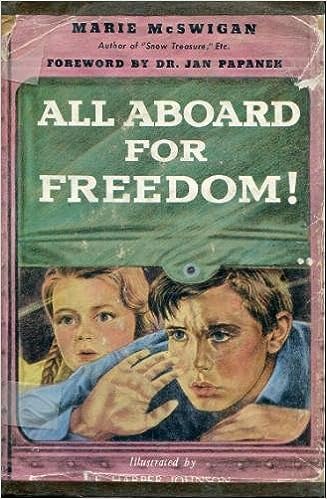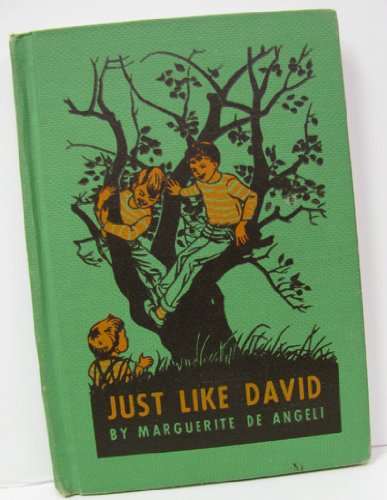 This book is the second book I’ve read in my plan to read or re-read all of Ms. L’Engle’s books this year. The first one I read was A Winter’s Love, published in 1957. Camilla, published several years earlier in 1951, deals with the same themes of the later book: marital compatibility and infidelity and the effect of marital problems on young adult children forced to confront their parents’ imperfections. I think A Winter’s Love shows some growth and maturity in the author’s ability to confront these issues, but Camilla is a very “young adult” sort of book, full of teen angst and idealism and some progress toward maturity on the part of the young protagonist.
This book is the second book I’ve read in my plan to read or re-read all of Ms. L’Engle’s books this year. The first one I read was A Winter’s Love, published in 1957. Camilla, published several years earlier in 1951, deals with the same themes of the later book: marital compatibility and infidelity and the effect of marital problems on young adult children forced to confront their parents’ imperfections. I think A Winter’s Love shows some growth and maturity in the author’s ability to confront these issues, but Camilla is a very “young adult” sort of book, full of teen angst and idealism and some progress toward maturity on the part of the young protagonist.
Camilla is fifteen years old, but as a child of the 1940’s and a child of wealthy parents, she’s led a sheltered life. She acts more like a twelve or thirteen year old in our day and time, which I think is a sad commentary on the way we encourage our children to grow up faster and sooner nowadays. That aside, Camilla begins with the line: “I knew as soon as I got home Wednesday that Jacques was there with my mother.
And so Camilla must grow up and deal with the fact that her mother is having an affair and her father is unable to express his love for Camilla’s mother in a way that will keep her from pursuing another man. Throughout the novel, Camilla tries to hide from the truth of her parent’s failings, longs to crawl back into some safe place where her mother and father take care of her instead of betraying her trust, but it’s not possible. She finds safety and comfort for a while in her budding romantic friendship with her best friend’s older brother, but that relationsip, too, is imperfect and impermanent.
Finally, facts and science and her ambition to become an astronomer give at least a place of retreat and stability in a world that has become dreadfully unpredictable. Camilla’s plight mirrors the plight of the world at large in the late forties/early fifties, just recovering from a world war and fairly sure that another war is inevitable. David, one of the characters in the novel, says as much, “Always another war . . Always has been, always will be. Frank will go off to it and he’ll come back looking like me, or he’ll come back blind, or without hands, or arms. Or not at all. Or perhaps I am being optmistic. Maybe there won’t be anything to come back to.”
Camilla’s facing life and choosing life even though her parents can no longer be her protectors is likened to the intelligentsia facing the facts about life in the modern world where war destroys and maims and kills. The idea is that people are powerless to stop the madness of war and evil, but individuals are able to choose to respond to life with perseverance and spirit. It’s a kind of a “do not go gentle into that good night” attitude that serves the main characters in the novel as a philosophy of life.
Camilla and her boyfriend, Frank, discuss God quite a bit, but they talk more about the kind of God they don’t believe in than the one they do. Both profess a belief in God, but they’re obviously confused about His place in the universe and the about the whole question of how and why God allows evil to continue. They say they don’t believe it’s God’s will for “bad things to happen to good people,” but they haven’t figured out how God does work in the world. (Neither have I totally figured that one out, for that matter.) Frank has a theory that resembles reincarnation, but involves people being reborn on other planets “until at last we’d finally know and understand everything—absolutely everything—and then maybe we’d be ready for heaven.”
I don’t think that Ms. L’Engle really became committed to any sort of orthodox Christian worldview until after this novel was written, so it’s not surprising that the characters in the novel are torn between a belief in some kind of God and a desire for a doctrine that enables human to somehow perfect themselves. In later novels, this religious dead end drops away, and L’Engle’s characters are much more drawn to a specifically Christian outlook on the world. However, her novels never do become preachy nor her characters even completely orthodox in their theology. People are still people in L’Engle’s novels, and that’s a good thing in view of the discussion about “contrived fiction” that we had a few posts ago.
Camilla was L’Engle’s fourth novel, and it reads like an early effort. It was republished in 1965. How much changed, I don’t know. Nevertheless, the novel is well worth the reading for fans of Ms. L’Engle’s fiction. Camilla Dickinson, the character, reappears as an elderly astronomer in the 1996 novel A Live Coal in the Sea.







